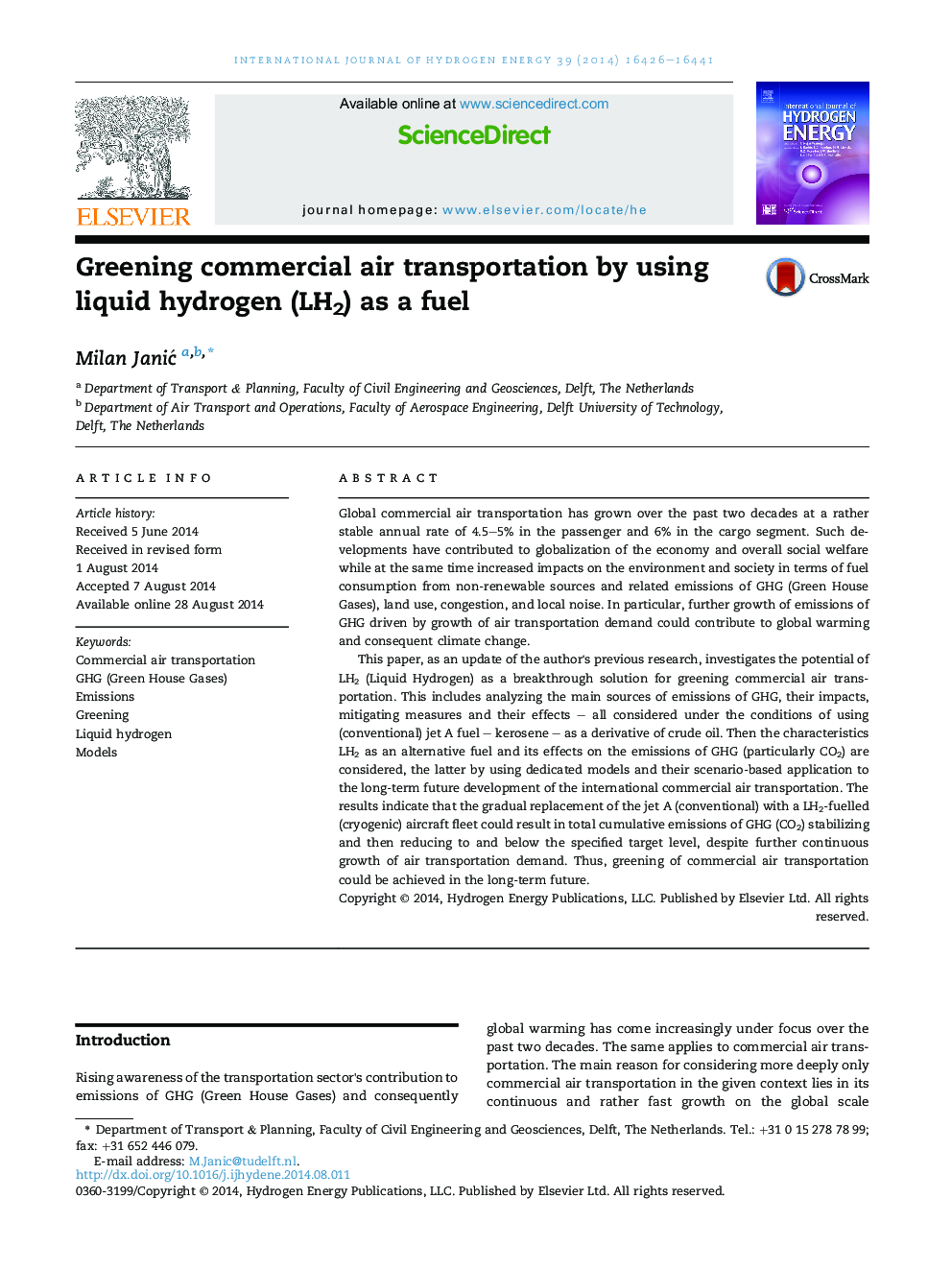| Article ID | Journal | Published Year | Pages | File Type |
|---|---|---|---|---|
| 1280979 | International Journal of Hydrogen Energy | 2014 | 16 Pages |
•Impacts of commercial air transportation on emissions of GHG (Green House Gases).•LH2 (Liquid Hydrogen) as a breakthrough solution for mitigating emissions of GHG.•LH2 supply chain and related aircraft technologies.•LH2 contribution to achievements of the long-term targets on emissions of GHG.
Global commercial air transportation has grown over the past two decades at a rather stable annual rate of 4.5–5% in the passenger and 6% in the cargo segment. Such developments have contributed to globalization of the economy and overall social welfare while at the same time increased impacts on the environment and society in terms of fuel consumption from non-renewable sources and related emissions of GHG (Green House Gases), land use, congestion, and local noise. In particular, further growth of emissions of GHG driven by growth of air transportation demand could contribute to global warming and consequent climate change.This paper, as an update of the author's previous research, investigates the potential of LH2 (Liquid Hydrogen) as a breakthrough solution for greening commercial air transportation. This includes analyzing the main sources of emissions of GHG, their impacts, mitigating measures and their effects – all considered under the conditions of using (conventional) jet A fuel – kerosene – as a derivative of crude oil. Then the characteristics LH2 as an alternative fuel and its effects on the emissions of GHG (particularly CO2) are considered, the latter by using dedicated models and their scenario-based application to the long-term future development of the international commercial air transportation. The results indicate that the gradual replacement of the jet A (conventional) with a LH2-fuelled (cryogenic) aircraft fleet could result in total cumulative emissions of GHG (CO2) stabilizing and then reducing to and below the specified target level, despite further continuous growth of air transportation demand. Thus, greening of commercial air transportation could be achieved in the long-term future.
